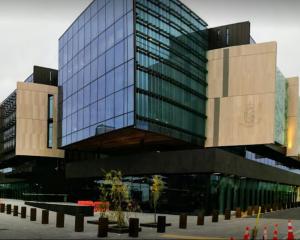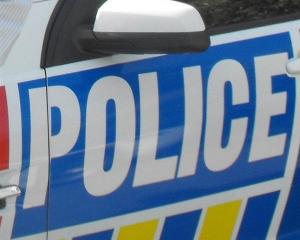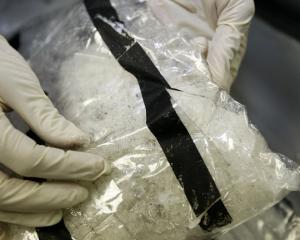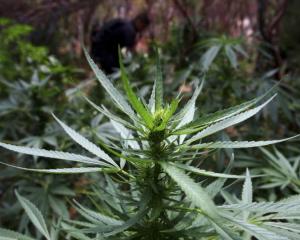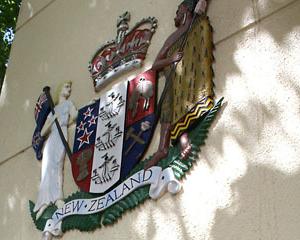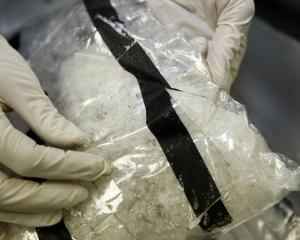New Zealand is climbing the global charts when it comes to injecting methamphetamine and one former drug squad cop says it's high time the Government tackled problems of drug addiction and demand gripping the country.
Methcon drug educator Dale Kirk said a new UN report on global methamphetamine use shows New Zealand "made it onto the front page of the report in our relation to our injecting the drug."
Mr Kirk said the quality of reporting varies across countries and poorer nations often under-reported drug use. But even compared only to other developed countries, New Zealand consistently ranked in the top three for meth or "P" use.
Mr Kirk, a former drug squad detective, said there are three main reasons for New Zealand's high rates of P abuse.
New Zealanders had "a binge mentality" and heavy drug use was often tolerated here more than in other cultures.
He also said purity rates in New Zealand had increased dramatically since the days when speed was the stimulant of choice.
Mr Kirk said old-style speed had purity rates of only 2-5 per cent while P now boasted purity rates of usually 60-70 per cent. This increased purity made it much easier for people to become addicted.
He said the third reason for meth's popularity here was because it's "the ultimate Number 8 wire, DIY-type drug''.
Drug manufacturers didn't have to import coca or heroin from far-off countries but could assemble the contents locally.
Mr Kirk said a decline in P abuse rates here was not likely soon.
"The people that are addicted are not going to stop any time soon. And of course, people who are manufacturing and selling the drug are always looking to increase their market."
He said he was particularly concerned by New Zealand's rising rates of intravenous P injection, highlighted by a UN global drug survey published today.
Mr Kirk said long-term P addicts moved on from swallowing pills to injecting "as their tolerance and addiction increase''.
Ecstasy use also appears to be rising rapidly in New Zealand. The UN report shows three times more ecstasy pills were seized in 2010 than in 2009.
"There has been a marked increase in ecstasy use and a reduction in price," he said.
Mr Kirk said the ecstasy supply was up because New Zealand is increasingly targeted by foreign gangs and ecstasy manufacturers, including criminals based in Iran, West Africa and Southeast Asia.
He also pointed to the party pill craze that swept the country last decade.
"We have a population that have grown up with BZP pills legally available between 2000 and 2008."
He said party pills "destigmatised the idea of pill-taking''.
He said about 30 million doses of party pills were sold before they were banned. But after the ban kicked in, users started looking for other options and ecstasy filled the void.
"It's perceived as a relatively harmless drug."
Mr Kirk said young New Zealanders who ventured overseas for OEs regularly had access to ecstasy in off-shore party hotspots and returned home with a fondness for the drug.
While ecstasy use was at a new high, Mr Kirk said tackling demand for methamphetamine was the bigger challenge.
"We can't ignore this drug. It's not going away."
He said there has been no effort "from the Government's point of view" to tackle the problem of demand.
Mr Kirk said community and government leaders should focus on education young people about drugs like P. He pointed to the alcohol education and drink-driving campaigns, which he said have led to changes in local attitudes towards binge drinking.
"We need to invest in education to help young people make good decisions."
KEY FINDINGS
*Most P produced in New Zealand is sold and consumed locally
* Most P is made from imported pharmaceutical preparations containing ephedrine and pseudoephedrine (usually Contac NT from China).
*Apart from local bikie gangs, the report says Vietnamese criminals are involved in P manufacture.
*There are no controls on importing, owning, or using pill presses. A pill press was discovered in one P lab to manufacture ecstasy pills.
*A shortage of ephedrine and pseudoephedrine has forced some gangs to extract ephedrine from the ephedra plant.
*For 2010, New Zealand reported seizures of 30.4 kg of methamphetamine, a 50% increase compared to 2009. More than half of this amount (19.5 kg) was seized at the border, mainly in the form of internal concealments and mail intercepts. Seizures of amphetamine remain relatively small. In 2010, only 0.5 kg of amphetamine were reported seized.
*One-third of regular drug users say P was 'very easy' to buy. Only 2% reported difficulty in finding the drug.
* Some 45,000 ecstasy pills were seized in 2010, three times more than the year before
*Ecstasy purity remains low, according to the UN. Most pills analysed after seizure showed little or no MDMA. Instead, many pills marketed as ecstasy contained mephedrone, ketamine, 4-MEC, BZP, TFMPP, Bk-MBDB (butylone), methenamine, methylone, cathinone and caffeine
*Prices for ecstasy pills mostly range from NZ$ 40 to NZ$ 70 and remained stable compared to 2009.
*The lifetime amphetamines usage rates among New Zealanders is 10.8%. Annual usage among all New Zealanders aged 16-64 is 2.1%, one of the highest rates in the world.

